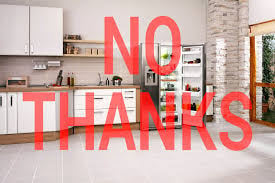Stop Chasing Flashy Markets: Here’s Where the Real Deals Live
Let’s get one thing straight: just because a state’s got palm trees or a skyline doesn’t mean it’s one of the best states to wholesale real estate. You want the truth? Flashy cities drain your wallet and crush newbies. Zillow’s algorithms don’t know jack about real wholesale real estate. You’re not here to sip lattes in overpriced metros. You’re here to stack contracts, close fast, and dominate a market where buyers are starving and sellers are bleeding.
This ain’t about hype. It’s about real estate markets where you can actually move product — where investment properties are cheap, motivated sellers are everywhere, and the real estate laws don’t make you jump through flaming hoops. You want deep deal volume, a hungry buyer list, and housing stock that doesn’t need a second mortgage to enter. Let’s break it down like a real one.
The Real Metrics That Matter (Forget Zillow’s Fantasyland)

You ever scroll through those guru YouTube videos and think, “Why are these clowns recommending Los Angeles for newbies?” Bro. You’re not pulling off wholesale real estate transactions in Beverly Hills unless you’ve got a private jet and a law firm in your back pocket. We’re after high-probability strike zones, not fantasy flips.
Where High Volume Meets Dirt-Cheap Prices
If you ain’t looking at counties with big-ass populations and affordable housing, you’re wasting time. Take Columbus, Georgia. Over 200K people, and the median home price is $157K. That’s not just “cheap,” that’s I-could-fund-this-with-my-tax-return cheap.
You want a formula? Boom:
County population over 400,000 + Median home price under $250K = Goldmine.
You get more seller pain and more potential buyers fighting over your deals.
Look at Lucas County, Ohio (Toledo). 430K people. $157K median. You’re not getting that ratio in California, and definitely not in New York. This is where the big boys eat.
Blood in the Water: Foreclosures + Vacancies = Deals

Wanna win? Follow the pain. High foreclosure rates, vacant homes, tired landlords — these folks don’t need motivation, they’re drowning in it. Illinois is leading the nation with 1 in every 2,548 homes in foreclosure. That’s a screaming pipeline of distressed real estate just begging for someone to take it off their hands.
Here’s a little gem:
-
Ohio = 0.6% housing vacancy (crazy tight)
-
Florida = 10% rental vacancy (landlords hurting)
When the housing market’s tight but rentals are empty, you’ve got steady supply with desperate sellers. That’s your feeding ground.
And don’t wait for these to hit the MLS — that’s for real estate professionals in suits. Use a site like FreeWholesaling.com to grab government and mailing lists — tax delinquencies, probates, code violations — all public, all money. Stack ‘em and start dialing.
Follow the Money (AKA Population + Job Growth)

You wanna flip in a ghost town? Be my guest. You wanna stack real cash? Go where the people are moving. Population growth = more demand = easier flips = less begging for buyers.
Since 2010, Texas and Florida grew by 24.5% and 24.3%. That ain’t just a stat — that’s raw opportunity. Don’t just trust state numbers though. Zoom in on hot metros:
-
Charlotte and Raleigh in NC
-
Dallas and Austin in TX
-
Orlando and Tampa in FL
These aren’t just random names. They’re strong economy zones that attract job seekers, families, and real estate investors alike.
Want proof? Look at Irvine, CA — not cheap, but the demand is so out of control that flips move before the ink dries. Find your own version of that — but without the California pricing.
Use State Laws to Slap Your Competition

Most wannabes cry when they hear the words “real estate license required.” That’s your signal to pounce. When real estate laws tighten up, half the new investors pack their bags. But not you. You’re not here to play scared — you’re here to play smart.
Take Illinois. Yeah, it’s got rules. You need a real estate license or you better know how to do a double close without pissing off the state. You think that scares the M.O.B.? Hell no. It clears the field. Less noise = more opportunities for people who actually do the work.
You want to close real estate transactions in states with “attorney review”? Cool — just find a real estate professional who isn’t lazy. Get a wholesaler-friendly closing attorney, keep your nose clean, and dominate.
Don’t forget — the licensing requirements are public knowledge. They’re not some secret. You want to keep closing deals legally? Follow the damn rules or build a workaround.
Build a Real Brand While Others Stay Broke

Most aspiring wholesalers skip this step. That’s why they stay broke. They think “brand” means some cheesy logo and Canva graphics. Nah. Brand = credibility + online presence + consistency.
Here’s how you win:
-
Get a simple site with your name and business info.
-
Get reviews from motivated sellers you’ve helped.
-
Make sure your buyers can see you’re the real deal.
You don’t need fluff. You need Google juice. And in today’s game, sellers, buyers, and even real estate professionals are checking you out online before they trust you.
Want to torch the lazy competition? Go where they aren’t looking — like Toledo, Ohio or Manchester, New Hampshire — and set up shop. No hype, no egos, just consistent action in favorable states where you aren’t fighting hedge funds for scraps.
Build trust. Act like a pro. Present like a pro. This is the difference between pulling more than one deal a year and actually running a real estate business.
Your Advantage = You Actually Give a Damn
Here’s a dirty secret: most real estate wholesalers treat this like a side hustle. You want to actually make money? Treat it like a damn business. That means:
-
Following local laws and knowing your state’s real estate market
-
Using ethical practices to build long-term reputation
-
Sticking with the state laws so you don’t end up on YouTube crying about legal issues
You’re not just assigning contracts. You’re stepping into real estate investment — which means investing time, showing full disclosure, and always aiming to ensure compliance.
Stack Your Machine Like a Damn Pro
This game ain’t about throwing darts. It’s about building a lead-eating, deal-churning, assignment-slinging machine that prints money while you sleep. If you’re still jumping between different states every week or testing ten tactics at once, stop. Time to lock in, go deep, and systematize every damn step.
Build a Marketing Stack That Works (Not Just Looks Cool)
Forget chasing shiny objects. Pick one investment strategy, master it, then stack your next one. You don’t need 50 tools — you need one method executed 50 times.
-
Start with direct mail? Commit. Hit that same real estate market every 30 days.
-
Running Facebook ads? Stop whining about the algorithm and split test your damn ads.
-
Cold calling? Then eat rejection for breakfast.
And don’t send out those generic “I BUY HOUSES” trash cards. Speak to pain. Use different messaging for distressed properties, probates, or landlords who’ve had the same listing on Zillow for 45 days. That’s how you find motivated sellers — not by being cute, but by getting real.
Your marketing stack doesn’t need to be complicated. Just consistent.
Your Cash Buyers List = Your ATM
/
You wanna get paid fast? Build a savage buyers list. Not a spreadsheet of maybe’s — a list of cash-in-hand, ready-to-buy end buyers who close without crying.
Here’s how:
-
Hit up every REIA meeting within a 100-mile radius. Network like your rent depends on it (because it might).
-
Post your contracts on Facebook groups — gated with “proof of funds required.”
-
Take the biggest flipper in your town to lunch. Learn their buying criteria. Then deliver.
One real end buyer is worth 100 tire kickers. You want repeat clients, not one-night stands.
Follow-Up = Where the Money Lives
Most new real estate wholesalers lose deals because they’re soft. One “not now” from a seller and they’re onto the next lead like a confused squirrel.
The pros? They follow up till the phone explodes.
-
Use a free or dirt-cheap CRM.
-
Set tasks for 30-, 60-, and 90-day follow-ups.
-
Create templates for texts, emails, and voicemails.
A seller who ghosts today might call you in three months, desperate. And guess who they’ll remember? The one who stayed consistent, not the dude who disappeared.
This is real estate wholesaling, not magic. You need structure, rhythm, and strategic choice in how you operate.
Get Ruthless With Offers
Stop yapping and start asking questions. What’s their pain point? Why are they selling? When do they need out? You’re not pitching — you’re investigating.
And when you do make an offer?
Justify it. Break it down.
-
Repairs: $25K
-
Holding: $5K
-
Partner profit: $15K
-
That’s why I can offer $120K, not $180K
It’s not predatory — it’s professional.
Running Comps: Don’t Get Sloppy
Zillow is not your comp tool. That “Zestimate” is worth less than a wet napkin. You need real data.
-
Use PropStream or other tools to find the value of a property without the MLS, or connect with a real estate professional for MLS access.
-
Pull 3–5 properties with the same beds, baths, and square footage.
-
Look within half a mile and the last 90 days.
In non-disclosure states like Texas, data is scarce. That’s why you need tools and people. Guessing will get you roasted. If your ARV’s off by $30K, your whole deal is toast.
Assignment or Double Close?
Your go-to is simple: assignment. Clean, no capital needed. But don’t be stupid — if you’re in a state with strict regulations, learn to double close.
-
Find a title company that understands assigning contracts
-
Have a transactional funding lender ready
-
Keep your sellers happy by explaining what’s happening (without legalese)
Use full disclosure and keep the paperwork clean. That’s how you keep closing deals and sleeping at night.
The Official M.O.B. Hit List: These States Are Feeding Frenzies
You wanna know the best states to wholesale real estate in 2025? It ain’t rocket science — it’s pattern recognition. You’re looking for a favorable state with booming population growth, strong demand, and prices low enough to leave room for profit. Forget the guru hype. Here’s where real money’s being made by real hustlers — not theory, just raw, ugly real estate activity.
Florida: The Sunshine State Where Sellers Are Sweating
Florida ain’t just beaches and snowbirds — it’s a damn goldmine. But don’t waste your time in Miami fighting for scraps. Go where there’s strong demand and a steady stream of investment opportunities: places like Brevard County (Melbourne) and Hillsborough County (Tampa).
-
High rental vacancy rate = motivated sellers
-
Pull tax-delinquent absentee owner lists and start dialing
Florida’s 24.3% population growth isn’t slowing. That’s a hell of a lot of people needing housing. You can eat every day here if you put in the work.
Ohio: Dirt-Cheap Entry and Endless Inventory
Let’s call it what it is — Ohio is a damn cheat code. You want affordable housing markets? Toledo, Dayton, Cleveland. Median home prices under $160K. You’re not getting that in the coastal states without a time machine.
-
Lucas County = 430,000 people, $157K median home price
-
One investor we know closes a deal a week in Toledo — calls it his personal ATM
Plus, Ohio’s got one of the highest foreclosure rates in the country. That’s not a red flag — that’s a green light with a siren on top.
Texas: Big Deals, Bigger Buyer Pools
Texas is still the wild west — in the best way. With a 24.5% population growth since 2010, the demand’s hotter than a Dallas sidewalk in July.
Avoid Austin and Dallas if you’re just starting — too much hedge fund money. Instead, dominate in Collin County (Plano) or Tarrant County (Fort Worth). Secondary markets = less competition, same cash-rich buyers.
One heads-up: Texas is a non-disclosure state, so comp data’s hidden. You’ll need MLS access or tools like PropStream. Or a real estate license in your back pocket to stay compliant and competitive.
North Carolina: The Underdog That Bit Back
Everyone’s slobbering over Charlotte. Be smarter. Hit Gaston County next door. Same strong economy, but with lower prices and less competition.
-
Flippers are pulling $20K-$30K assignment fees from Gastonia
-
Buyers priced out of Charlotte are desperate — and you’re the supplier
Bonus play? Use Opendoor and other iBuyers to set a pricing floor. If you’re locking properties up 15% below their offer, your end buyer is guaranteed.
Georgia: Forget Atlanta. Hit Columbus.
Every rookie’s chasing Atlanta. Let them. You? You’re in Columbus, Georgia. 200K+ people, $157K median price. That’s pure low cost opportunity.
-
Tired landlords are bleeding on Facebook Marketplace
-
Secondary cities like Macon and Augusta still have open lanes
Big institutions haven’t sucked these markets dry — yet. That’s your opening.
Arizona: Sun, Sweat, and Serious Money
Phoenix is overheated, literally and financially. Try Sun City or Tucson, where retirees are aging out and out-of-state owners are waving the white flag.
-
Use Arizona’s required AAR contract — don’t try to slide with a generic template
-
The more ethical practices you show, the more trust you’ll build with out-of-state owners who’ve been burned before
Illinois: Regulations Separate the Boys from the M.O.B.
Regulations? Good. Keeps the cowards out. Illinois has the highest foreclosure rate in the U.S. That’s not a red flag — it’s your entry ticket.
-
Get your real estate license or learn to double close. Takes less time for the latter.
-
Deals are still getting done — just not by the ones who gave up on Facebook
Cook County competition got cut in half overnight after the law passed. You wanna double your volume? Be the one who stayed.
“Hidden Gem” Markets the Gurus Won’t Mention (Because They Don’t Know)
You ever notice how every guru’s market list looks the same? It’s all Texas, Florida, Atlanta, maybe Charlotte if they’re feeling adventurous. But here’s what they won’t say: there are dozens of “no-name” counties out there crushing it. These aren’t the hottest zip codes — they’re the overlooked jackpots.
The Anonymity Advantage: Stay Under the Radar and Get Paid
If you’re smart — and I know you are if you’ve read this far — you’ll skip the guru spoon-feeding and go hunting yourself. Take the simple formula:
-
County with 400,000+ people
-
Affordable housing market (under $250K median price)
-
Distressed properties available
-
Room for investment strategy and fast closing deals
Then find a market nobody’s looking at.
Example:
-
Gaston County, NC — cash buyers priced out of Charlotte are pouring in
-
Brevard County, FL — retirees and aerospace industry keep things moving
-
Lucas County, OH — personal ATM status
These spots aren’t just profitable. They’re quiet. No hedge fund sharks, no Reddit bros. Just you, motivated sellers, and a wide-open lane.
Conclusion: Stop Reading and Start Doing
You just read the entire damn best states to wholesale real estate playbook. Don’t close this tab and go binge YouTube. Take action like your rent depends on it.
Your Mission: Take Massive, Relentless Action
Here’s your next 30 days:
-
Pick ONE of the best states from this list — not all of them, just one.
-
Pull a local list: probates, tax delinquencies, code violations.
-
Build your buyers list like your life depends on it.
-
Follow up relentlessly. Like a dog on a steak.
You’ve now got the blueprint. You’ve got the strategic choice. You know which laws matter, what legal issues to dodge, and how to ensure compliance without whining.
No more waiting. New wholesalers, aspiring wholesalers, tired dreamers — it’s your move. This guide gave you the ample opportunities, the tactics, and the truth.
Now go do the damn thing.